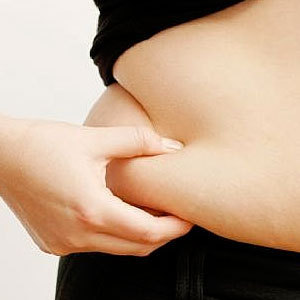
Having a baby inevitably leads to weight gain around the tummy and it is necessary for the pregnancy to gain that weight but after the baby is born many mums want the tummy to go asap – but it takes time and it is without doubt the hardest place on the body to lose the fat from.
But it can be done if you follow a sensible eating and diet plan and accept that it can take many months for it to go – and many women report significant improvements from breastfeeding too.
Your age will also play a factor in how you store fat. The older you are, the more difficult it is to shift the excess weight, especially around your middle. The types of food you eat, along with the alcohol you drink and whether or not you exercise also play their part.
If you eat food high in bad types of fat, such as margarine, fried fast foods, baked goods, cheeseburgers etc., you’ll find it difficult to lose stomach fat as this type of fat is highly processed and is not as easily broken down by the body when compared to good types of fat, such as extra-virgin olive oil.
Alcohol also plays much more of a part in stomach fat than you may think – that’s why a rounded belly is often referred to as a “beer belly”, because it can be caused by drinking excess beer! Alcohol is incredibly high in calories, especially beverages such as wine, beer, lager, alcopops and cider, and drinking these beverages regularly whilst also eating an average amount of calories per day can cause you to put on stomach fat that is incredibly difficult to get rid of.
There are two types of fat – visceral fat and subcutaneous fat. Often, a rounded stomach is caused by the first type of fat, visceral fat, which is buried deep beneath the skin and which covers your internal organs. Subcutaneous fat is located just beneath the skin and is easier to shift than visceral fat – you have to work much harder to get rid of visceral fat. Whilst visceral fat is not as visible as subcutaneous fat, it is far more dangerous – it can cause high cholesterol, heart problems, a fatty liver and can, in turn, cause you to gain more weight. You can read more about the two types of fat here
How to get rid of stomach fat
So how do you get rid of stomach fat? According to the Mayo Clinic, the single most effective way to begin shifting stomach fat is to increase your exercise and decrease your calorie intake.
Visceral fat is targeted especially well by a combination of diet and exercise, and subcutaneous fat will also begin to melt away as you change your lifestyle. Lowering your alcohol intake is also a good idea, especially if you drink it to excess.
If you still want to drink alcohol, just be sure to factor it into your daily calorie allowance. You should be aiming to do at least 30 minutes of exercise every day – make it a combination of cardiovascular exercise and muscle training, so that you burn off the calories and build muscle, allowing you to use calories more efficiently, thus helping you to lose more weight! As for your calorie intake, you need to reduce your calorie intake by around 500 calories per day for a weight loss of 500g – 1kg per week, which is a steady and healthy weight loss.
The important thing to always remember when losing weight is that it is a lifestyle change, not just a diet – make a commitment to changing your life and you’ll find that the belly fat will be gone forever. To see more tips on how to bust the belly fat
